Biological Activity of Recently Discovered Halogenated Marine Natural Products
- PMID: 26133553
- PMCID: PMC4515607
- DOI: 10.3390/md13074044
Biological Activity of Recently Discovered Halogenated Marine Natural Products
Abstract
This review presents the biological activity-antibacterial, antifungal, anti-parasitic, antiviral, antitumor, antiinflammatory, antioxidant, and enzymatic activity-of halogenated marine natural products discovered in the past five years. Newly discovered examples that do not report biological activity are not included.
Keywords: antibacterial; antiinflammatory; antioxidant; antiparasitic; antitumor; antiviral; natural products; organobromine; organochlorine; organohalogen.
Figures
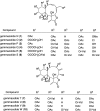


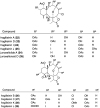























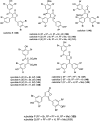

















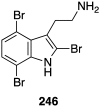






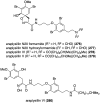


































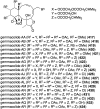










































References
-
- Gribble G.W. Naturally occurring organohalogen compounds—A comprehensive survey. Prog. Chem. Org. Nat. Prod. 1996;68:1–496. - PubMed
-
- Gribble G.W. Naturally occurring organohalogen compounds—A comprehensive update. Prog. Chem. Org. Nat. Prod. 2010;91:1–613. - PubMed
-
- Gribble G.W. Chapter 1—Occurrence of halogenated alkaloids. In: Knölker H.-J., editor. The Alkaloids: Chemistry and Biology. Volume 71. Academic Press; Amsterdam, The Netherlands: 2012. pp. 1–165. - PubMed
-
- Gribble G.W. Recently discovered naturally occurring heterocyclic organohalogen compounds. Heterocycles. 2012;84:157–207. doi: 10.3987/REV-11-SR(P)5. - DOI
Publication types
MeSH terms
Substances
LinkOut - more resources
Full Text Sources
Other Literature Sources
Molecular Biology Databases
Miscellaneous

